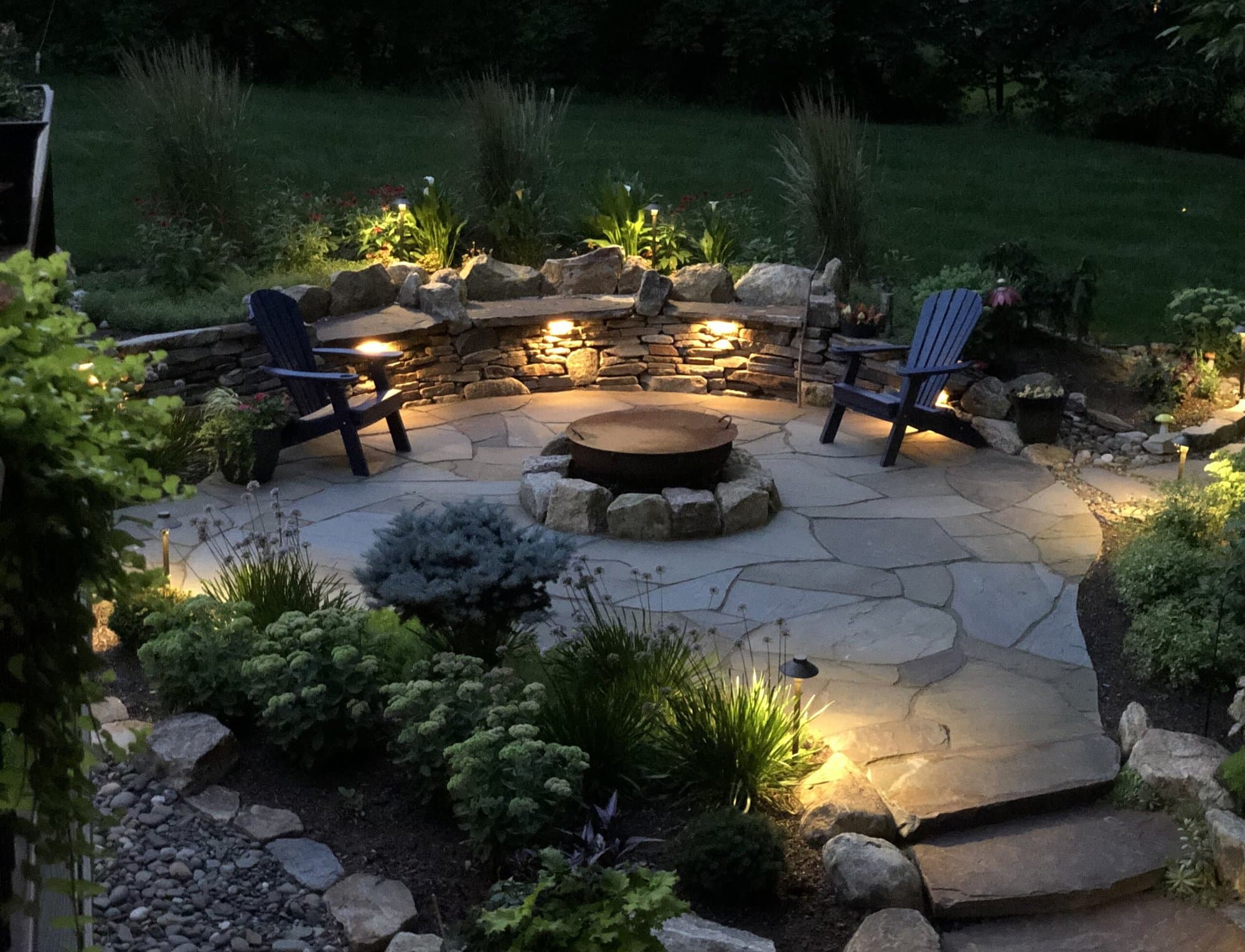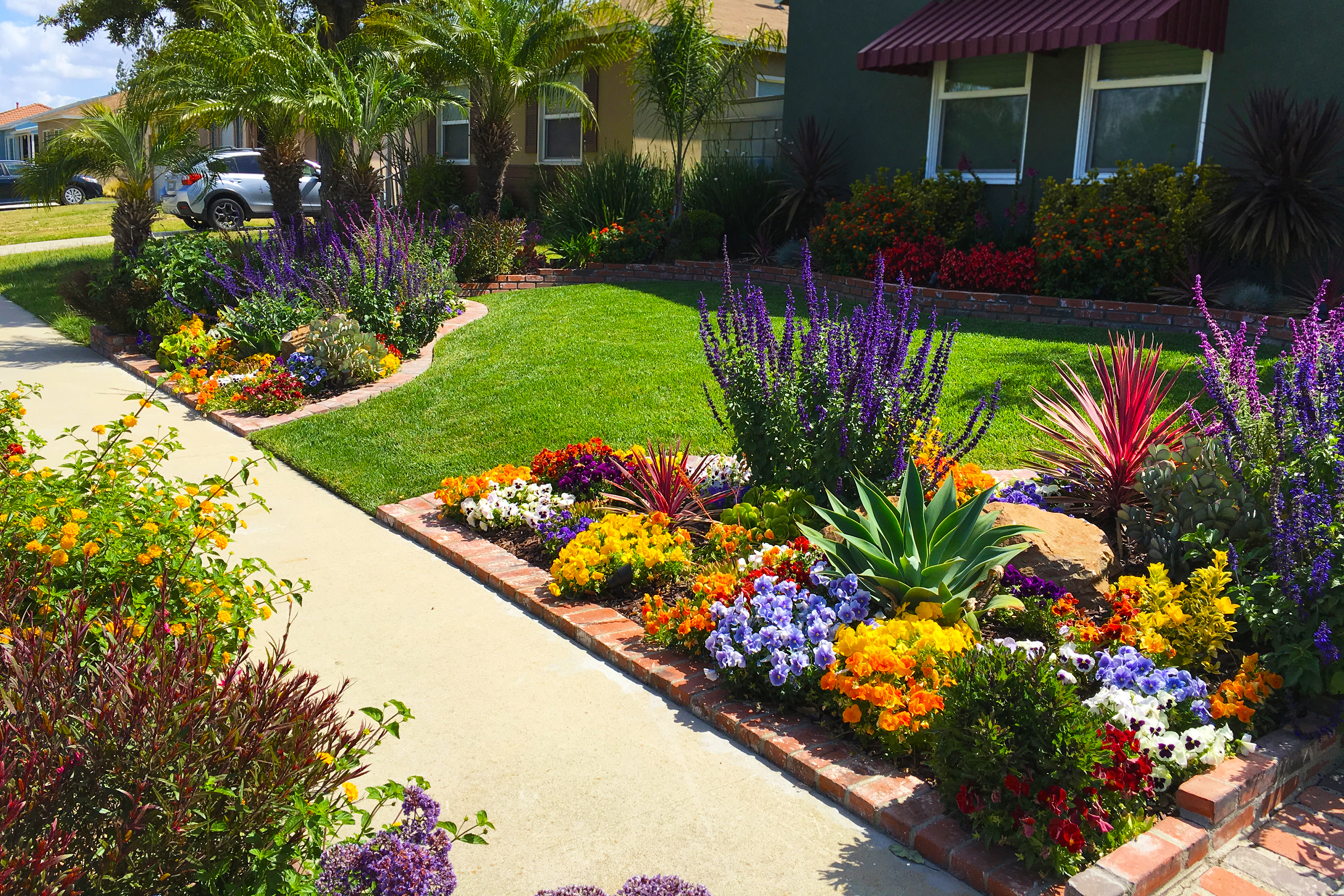A Comprehensive Guide to Designing and Implementing Effective Landscape Design Solutions
The art and scientific research of landscape design extend beyond plain aesthetic appeals; they involve a thoughtful integration of layout concepts, environmental stewardship, and useful implementation. An extensive guide to reliable landscaping services starts with a comprehensive understanding of your outside space, emphasizing the relevance of percentage, balance, and unity. As we check out sustainable strategies and the choice of suitable vegetation, the ramifications for biodiversity and community health end up being increasingly noticeable. What strategies can one utilize to make sure these landscapes not only prosper but also prosper in harmony with their environments?

Comprehending Landscape Design Concepts
One may wonder what fundamental aspects add to reliable landscape style. At its core, successful landscape layout depends upon several vital concepts that guide the setup and choice of elements within a room. These principles consist of unity, proportion, equilibrium, and rhythm, each serving to develop a harmonious exterior setting.
Unity refers to the natural connection amongst various components, guaranteeing that they interact cosmetically and functionally. Balance can be attained with balanced or asymmetrical plans, allowing the landscape to feel steady and welcoming. Proportion includes understanding the range of components in regard to each various other and the surrounding environment, promoting aesthetic consistency and convenience.

Analyzing Your Outdoor Space
Before applying the principles of landscape style, a thorough evaluation of your outside room is important. This initial analysis helps define the range of your landscape design task and ensures that your style lines up with the special features of your home. Begin by assessing the measurements of your room, taking precise measurements to understand the offered location for different components such as pathways, gardens, and outdoor patios.
Next, observe the existing functions of your landscape, including topography, soil quality, and drainage patterns. These factors considerably influence plant selection and placement. Additionally, assess the sunlight direct exposure throughout various locations throughout the day, as this will certainly influence the kinds of plants that prosper in your garden.
Think about the microclimates created by structures, trees, and various other barriers, as they can influence temperature level and dampness degrees. Take note of any existing plants or hardscape components that you want to get rid of or maintain. This extensive assessment lays the foundation for a well-informed and reliable landscaping option, ensuring that your style is not just aesthetically pleasing but also practical and lasting for several years to find.
Sustainable Landscape Design Techniques
Incorporating sustainable landscape design methods is important for creating an ecologically responsible exterior room. These techniques not only advertise environmental balance however also improve the functional and aesthetic value of a landscape. One fundamental strategy is the use of indigenous plants, which require less water and upkeep while supporting neighborhood wildlife. Carrying out efficient irrigation systems, such as drip watering, reduces water waste and makes certain that plants get ample moisture.

An additional effective strategy is the tactical positioning of trees and hedges to offer natural windbreaks and shade, thus reducing energy costs (Palm Desert Landscaping). Rain gardens can be integrated into the landscape layout to take care of stormwater drainage efficiently, filtering system toxins before they go into rivers
Picking the Right Plant Kingdoms
Selecting the right plants for your landscape is critical to achieving both aesthetic allure and environmental consistency. The procedure starts with an understanding of your neighborhood climate, soil conditions, and the particular microenvironments within your landscape. Examining factors such as sunlight exposure, wetness degrees, and existing vegetations will certainly help you choose plants that flourish in your special setup.
Take into consideration including indigenous see this here plants, as they are well-adapted to local conditions, require less maintenance, and support regional wild animals. Furthermore, picking a varied variety of varieties can boost biodiversity while lowering the threat of condition and bug episodes. It is important to assess the growth routines, growing durations, and seasonal colors of prospective plants to create a vibrant and natural landscape.
Moreover, consider the intended use the space; for circumstances, if the location will certainly experience high foot web traffic, go with resilient ground covers. By attentively picking plants that line up with both your environmental requirements and aesthetic goals, you can create a sustainable landscape that not only boosts your property yet additionally adds favorably to the surrounding community.

Application and Maintenance Methods
As soon as the ideal plants have actually been chosen for your landscape, my website the focus moves to efficient implementation and recurring upkeep strategies. Effective installation begins with appropriate website preparation, which includes soil testing to figure out nutrient levels and pH, adhered to by amending the soil as needed. Thoroughly prepare plants according to their development practices and light demands, making sure adequate spacing to promote healthy and balanced growth.
Watering is an essential component of execution. Develop a watering schedule that thinks about the specific requirements of each plant types, readjusting for seasonal adjustments. Making use of drip watering systems can improve water efficiency and lower runoff.
Maintenance techniques need to be carried out to guarantee the longevity and vigor of your landscape. Regular jobs consist of weeding, mulching, and pruning to regulate growth and protect against condition. Fertilization needs to be carried out based upon soil examinations, supplying the necessary nutrients without over-fertilizing.
Keeping track of for parasites and illness is important; early discovery can avoid significant damage. Seasonal changes to maintenance regimens, such as preparing and winterizing perennials for spring development, will guarantee that your landscape remains aesthetically enticing and healthy and balanced year-round.
Final Thought
Successful application and recurring upkeep further make sure the durability and vitality of landscapes. By incorporating these aspects, landscapes can be transformed right into attractive, useful atmospheres that advertise biodiversity and contribute positively to area wellness.
One could wonder what foundational aspects contribute to efficient landscape design. At its core, successful landscape design pivots on several vital principles that assist the arrangement and option of elements within a room.Choosing the right plants for your landscape is essential to accomplishing both visual appeal and ecological view publisher site harmony. It is vital to review the growth practices, flowering periods, and seasonal shades of potential plants to develop a cohesive and dynamic landscape.
As soon as the appropriate plants have been picked for your landscape, the focus changes to efficient implementation and continuous maintenance approaches.